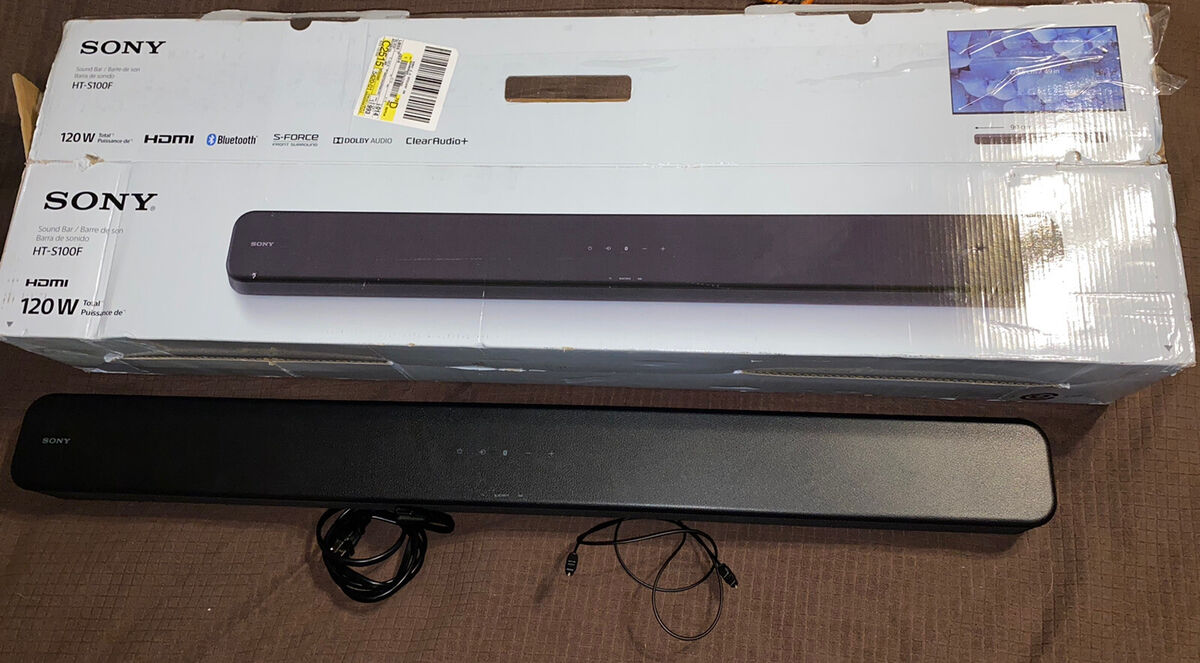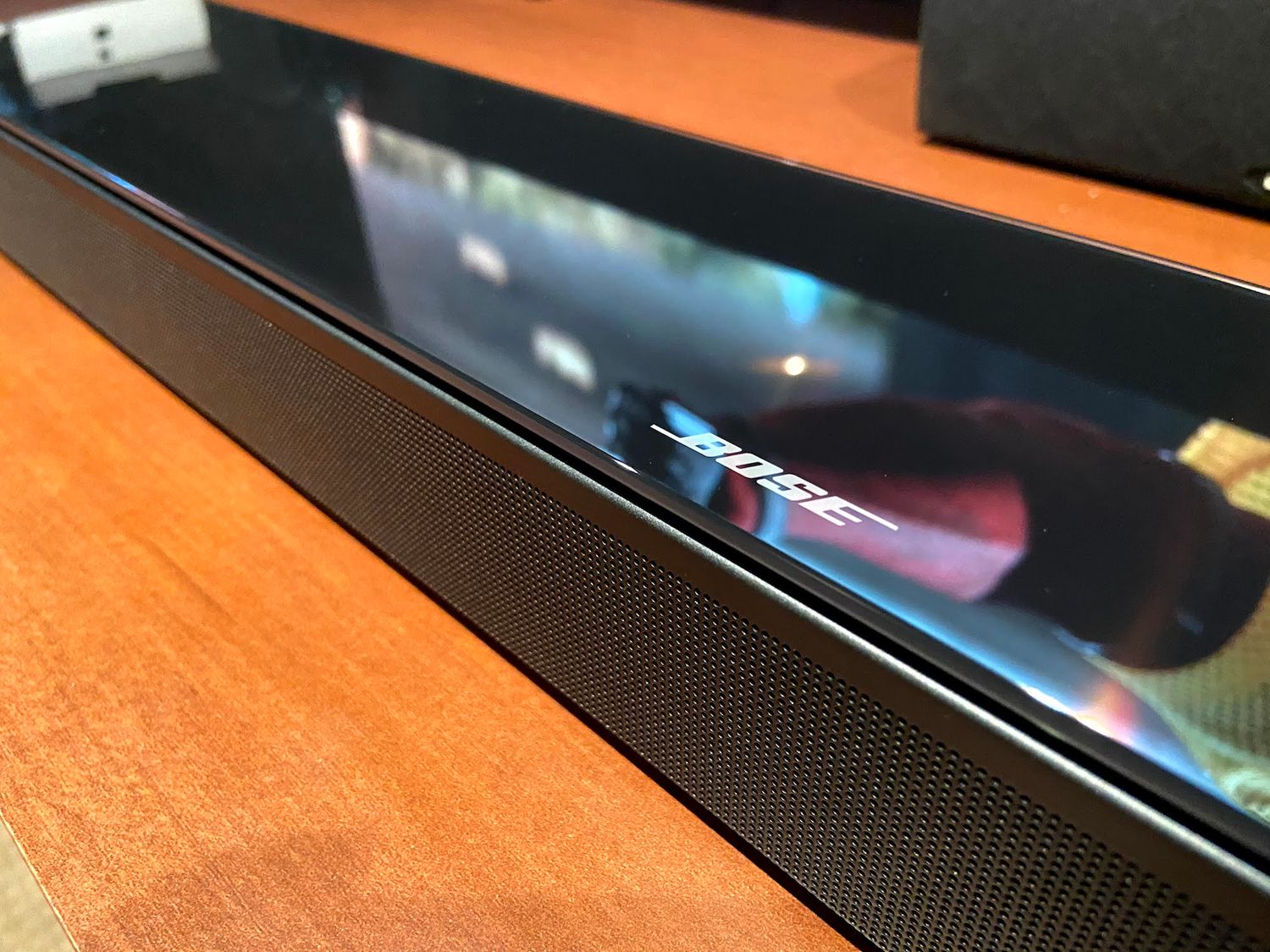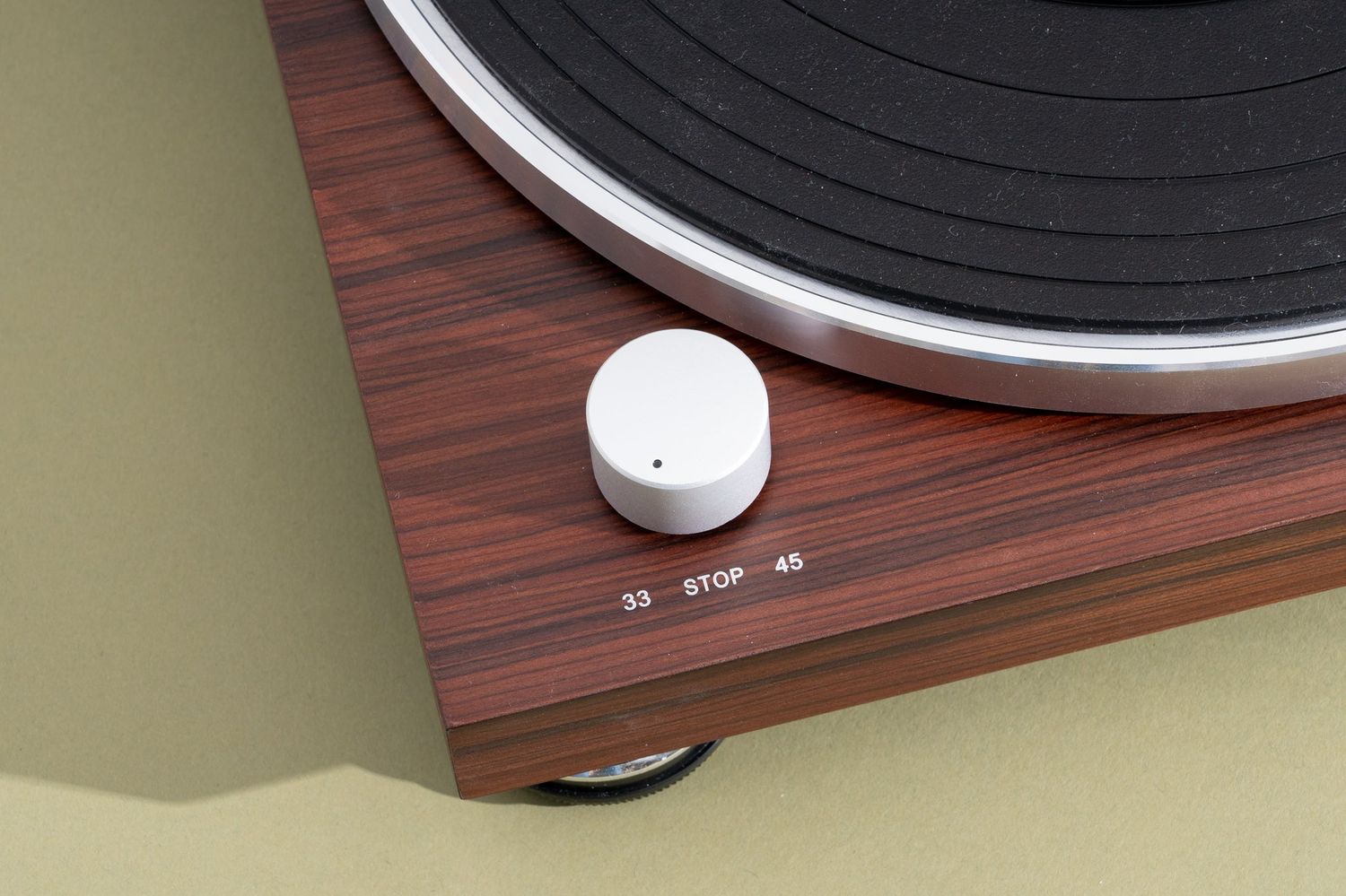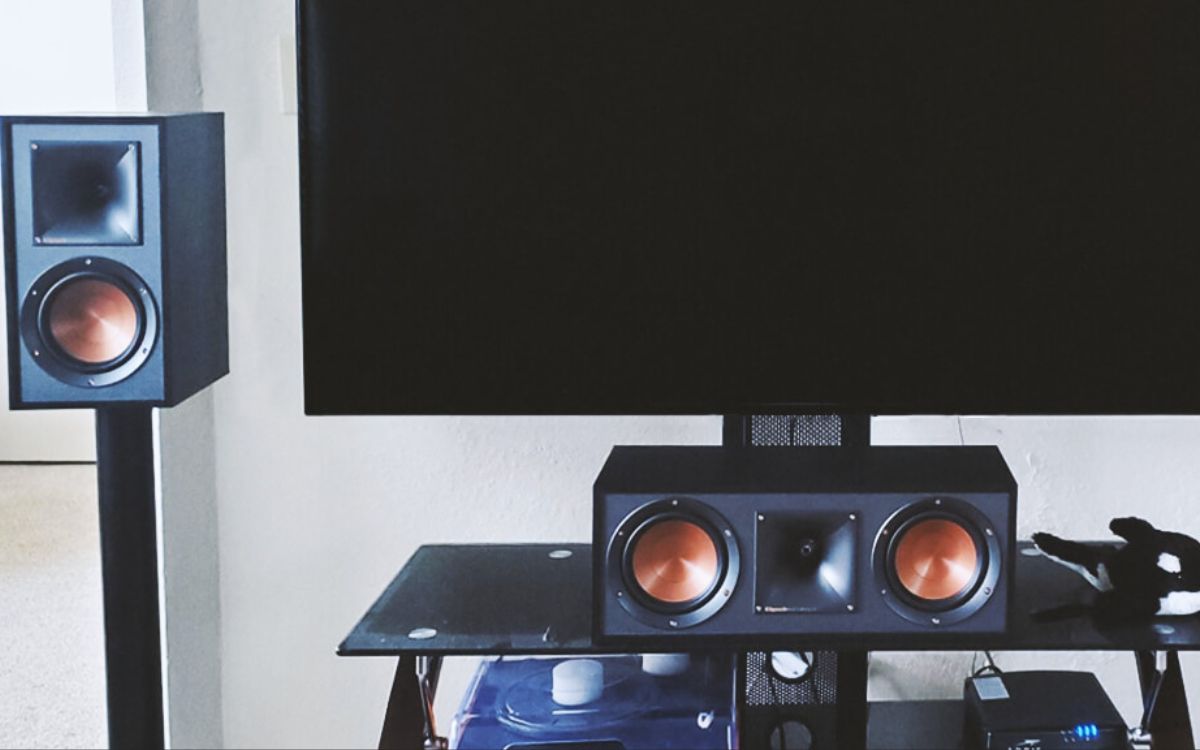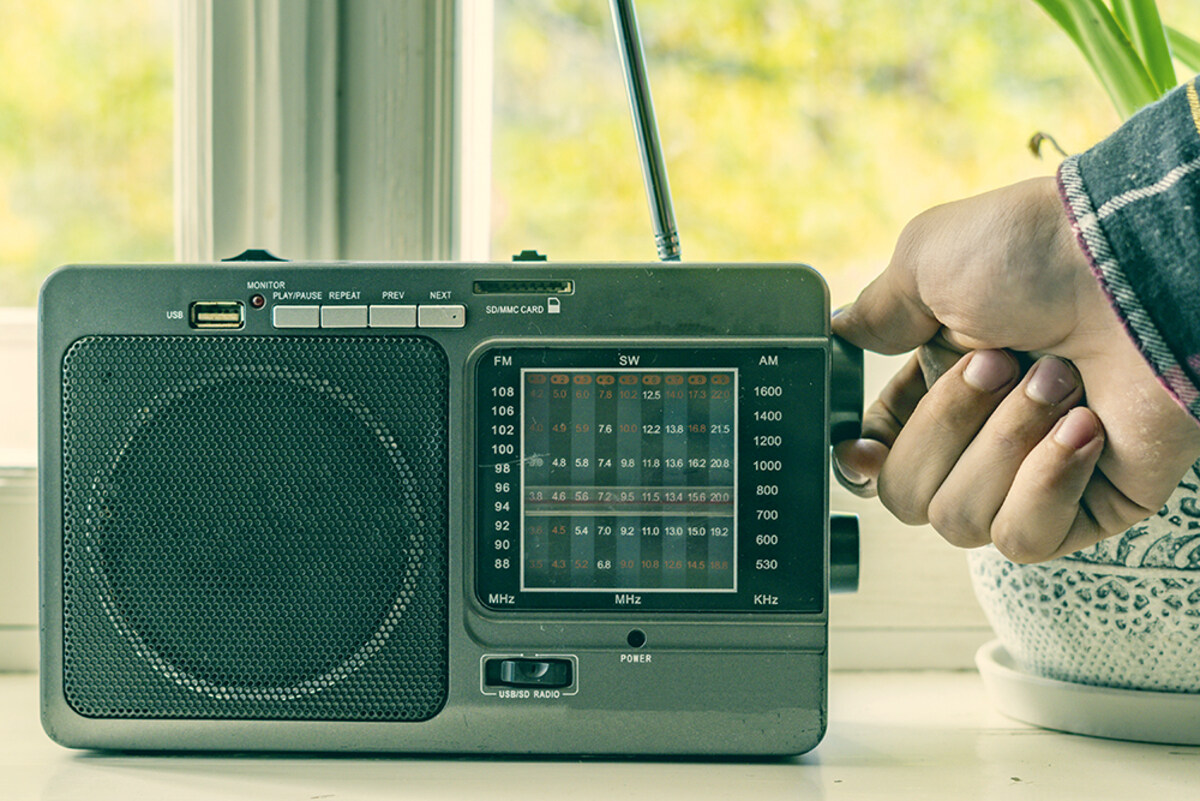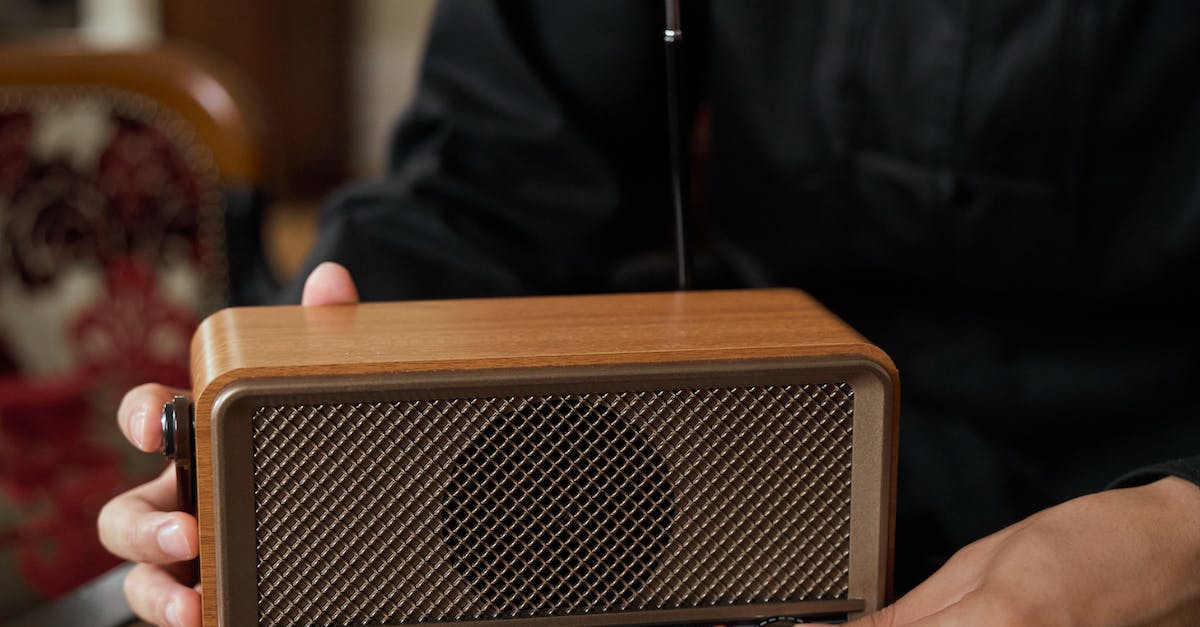Home>Production & Technology>Sound Bar>Why Does My Sound Bar Volume Goes Up And Down
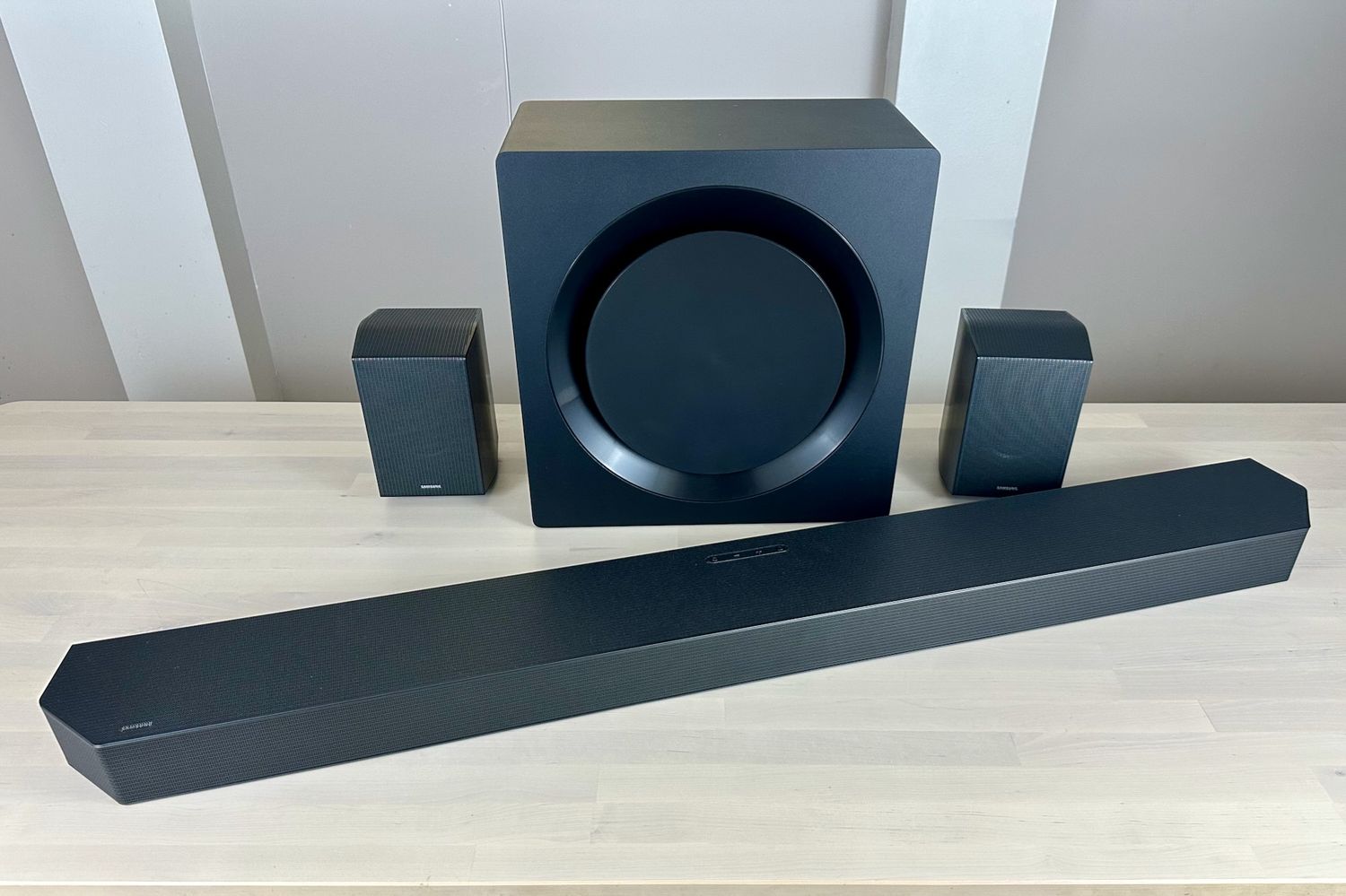

Sound Bar
Why Does My Sound Bar Volume Goes Up And Down
Published: December 27, 2023
Experiencing fluctuating volume on your sound bar? Discover the reasons behind this issue and find solutions to stabilize your sound bar's volume with our helpful guide.
(Many of the links in this article redirect to a specific reviewed product. Your purchase of these products through affiliate links helps to generate commission for AudioLover.com, at no extra cost. Learn more)
Table of Contents
- Introduction
- Possible Causes of Fluctuating Sound Bar Volume
- Issue with Audio Source
- Audio Settings Malfunction
- Audio Cables and Connections
- Sound Bar Hardware Issues
- Troubleshooting Tips
- Update Firmware
- Reset Sound Bar
- Check Audio Source and Settings
- Inspect Cables and Connections
- Contact Manufacturer Support
- Conclusion
Introduction
Sound bars have become a popular choice for enhancing the audio experience of TVs and home theater setups. They provide a sleek and convenient solution for improving sound quality, but sometimes, users encounter a frustrating issue: the volume of the sound bar goes up and down unexpectedly.
This fluctuating volume problem can be perplexing and disruptive to your listening experience, but understanding the possible causes and solutions can help you resolve the issue and enjoy your sound bar to its fullest potential. In this article, we will explore the various reasons why your sound bar volume may be fluctuating and provide troubleshooting tips to help you rectify the problem.
Before delving into the potential causes, it’s important to note that different sound bars may exhibit different behaviors, and the troubleshooting steps may vary accordingly. However, many of these issues can be resolved with common troubleshooting techniques.
So, whether you’ve recently purchased a sound bar and noticed volume fluctuations or you’ve been dealing with this problem for some time, let’s dive into the possible causes and solutions to help you resolve the issue and enjoy a consistent and immersive audio experience.
Possible Causes of Fluctuating Sound Bar Volume
There are several potential reasons why your sound bar volume may be fluctuating. Understanding these causes can help you pinpoint the issue and find an appropriate solution. Let’s explore some common culprits:
- Issue with Audio Source: In some cases, the audio source itself may be the root cause of the volume fluctuations. This can occur if the source material has inconsistent sound levels or if there are issues with the way it is encoded or transmitted.
- Audio Settings Malfunction: Incorrect or misconfigured audio settings can also lead to volume irregularities. For example, if the sound bar’s equalizer settings are set to boost certain frequencies, it can cause the volume to fluctuate when those frequencies are encountered in the audio.
- Audio Cables and Connections: Faulty or loose connections between the sound bar and other audio devices can introduce interference and result in volume fluctuations. Damaged or low-quality cables can also cause signal loss or distortion, impacting the sound output.
- Sound Bar Hardware Issues: Internal hardware issues within the sound bar itself can cause volume fluctuations. This can include problems with the amplifier, speaker drivers, or circuitry. Over time, components may degrade or become faulty, leading to erratic volume behavior.
It’s worth noting that these causes are not mutually exclusive and can sometimes occur in combination. It may require some troubleshooting to identify the specific cause or causes contributing to the volume fluctuations.
Now that we have a better understanding of the possible causes, let’s move on to the next section, where we will explore troubleshooting tips to help you resolve the fluctuating volume issue with your sound bar.
Issue with Audio Source
One possible cause of fluctuating sound bar volume is an issue with the audio source itself. This can occur if the source material, such as a movie, TV show, or music track, has varying sound levels or if there are problems with the way the audio is encoded or transmitted.
Streaming services, for example, may compress audio files to reduce bandwidth usage, which can impact the overall sound quality and lead to volume inconsistencies. Additionally, some media players or devices may have built-in volume normalization features that automatically adjust the volume levels to compensate for varying sound levels in different audio sources. While this can be helpful in maintaining a consistent listening experience, it can sometimes result in noticeable volume fluctuations.
If you experience volume fluctuations with specific audio sources, such as certain movies or TV shows, it is worth checking if the issue persists with other sources as well. Try playing different types of media, such as music or podcasts, to see if the volume fluctuates uniformly across different sources or if it is specific to certain types of content.
Furthermore, ensure that the audio source is connected properly to the sound bar. Sometimes, loose or faulty connections can introduce interference and affect the audio output quality, leading to volume irregularities. Double-check the audio cables and connectors to ensure they are securely connected and not damaged.
If you suspect that the audio source itself is the cause of the volume fluctuations, there are a few steps you can take to mitigate the issue:
- Check the audio settings of the source device: Some devices, such as smartphones or media players, may have volume normalization or sound enhancement features that can be adjusted or disabled. Explore the settings of the source device and experiment with different settings to see if it resolves the volume fluctuations.
- Try a different audio source: Test the sound bar with different sources, such as a different streaming service, TV channel, or audio player. If the volume fluctuations are specific to a particular source, it may indicate an issue with that source’s audio encoding or transmission.
- Update the firmware or software of the source device: Occasionally, audio-related issues can be resolved by updating the firmware or software of the source device. Check for any available updates and install them if necessary.
If the issue persists after trying these steps, it may be time to investigate other potential causes, which we will explore in the subsequent sections.
Audio Settings Malfunction
Incorrect or misconfigured audio settings can also contribute to fluctuating sound bar volume. Sound bars often come equipped with various settings and equalizer options that allow you to customize the audio output according to your preferences. However, if these settings are not configured correctly, they can lead to volume irregularities.
One common setting that can affect volume fluctuations is the equalizer. The equalizer allows you to adjust the balance of different frequencies, such as bass, treble, or mid-range, to suit your listening preferences. However, if certain frequencies are boosted significantly, it can result in volume inconsistencies when encountering audio content that emphasizes those frequencies.
Additionally, some sound bars may have dynamic range compression or volume leveling features. These features aim to reduce the contrast between quiet and loud sounds, making the audio more consistent and balanced. While this can enhance the listening experience, improper settings or excessive compression can cause volume fluctuations.
To address audio settings-related volume fluctuations, follow these steps:
- Access the sound bar’s settings menu: Consult the user manual or documentation to find out how to access the settings menu of your sound bar. This is usually done through a remote control or a dedicated mobile app.
- Review the equalizer settings: Check the equalizer settings of your sound bar and ensure that no frequencies are boosted excessively. If you notice any particular frequencies that are significantly amplified, try reducing their levels and see if it improves volume consistency.
- Adjust dynamic range compression or volume leveling settings: If your sound bar has these features, try adjusting their settings. Experiment with different levels of compression or leveling and observe if it helps resolve the volume fluctuations.
- Reset the sound bar to default settings: If you have made extensive changes to the audio settings and are unsure of the original configurations, consider resetting the sound bar to its default settings. This can help eliminate any unintended settings that might be causing volume irregularities.
After making these adjustments, test the sound bar with different audio sources to see if the volume fluctuations have been alleviated. If the issue persists, continue troubleshooting by examining other potential causes, as we will explore in the following sections.
Audio Cables and Connections
Another potential cause of fluctuating sound bar volume is issues with the audio cables and connections. Faulty or loose connections between the sound bar and other audio devices can introduce interference and result in volume irregularities.
First, check the audio cables connecting the sound bar to the audio source, such as a TV, Blu-ray player, or game console. Ensure that the cables are securely plugged into the appropriate ports and that they are undamaged. Sometimes, a loose or damaged cable can lead to signal loss or distortion, affecting the sound output and causing volume fluctuations.
It’s also worth considering the type and quality of the audio cables being used. Poor-quality or incompatible cables might not provide a solid and consistent connection, leading to audio issues. If possible, try using a different set of audio cables to see if it resolves the volume fluctuations. Opt for high-quality cables that are designed for audio transmission to ensure the best possible signal integrity.
In addition to the cables, inspect the connections between the sound bar and the audio source devices. Dust, debris, or corrosion on the connectors can interfere with the audio signal and contribute to volume inconsistencies. Clean the connectors using a soft cloth or compressed air to remove any potential contaminants that might be causing the problem.
If you have multiple audio devices connected to the sound bar, such as a TV, game console, or streaming device, verify that all connections are secure and properly configured. Some audio devices have their own volume control settings, which, if not synchronized with the sound bar, can lead to conflicting volume adjustments and fluctuations. Ensure that the volume settings on both the sound bar and the connected devices are appropriately adjusted.
It’s also worth exploring any additional audio settings or options available on the sound bar. Some sound bars have specific settings for different types of audio connections, such as HDMI ARC or optical. Ensure that these settings are correctly configured based on your audio setup for optimal performance.
By ensuring proper cable connections and addressing any potential issues, you can eliminate one common cause of fluctuating sound bar volume. If the issue persists after checking the cables and connections, continue troubleshooting by examining other possible causes, as we will discuss in the following sections.
Sound Bar Hardware Issues
Internal hardware issues within the sound bar itself can also contribute to volume fluctuations. Over time, components within the sound bar may degrade, become faulty, or develop technical glitches that affect the volume output.
One hardware issue that can cause volume irregularities is a problem with the sound bar’s amplifier. The amplifier is responsible for amplifying the audio signal and driving the speakers. If the amplifier is malfunctioning or experiencing fluctuations in power output, it can result in inconsistent volume levels.
Another potential hardware issue is with the speaker drivers. If the drivers are damaged, worn out, or misaligned, it can impact the sound quality and volume consistency. Additionally, issues with the sound bar’s circuitry, such as malfunctioning capacitors or resistors, can also result in volume fluctuations.
Unfortunately, diagnosing and addressing hardware issues within the sound bar can be challenging for the average user. If you suspect a hardware problem, it is recommended to contact the manufacturer’s support or bring the sound bar to a professional technician for inspection and repair.
Before seeking professional assistance, there are a few steps you can take to ensure that the hardware is the root cause of the volume fluctuations:
- Reset the sound bar: Performing a factory reset on the sound bar can sometimes resolve software or firmware glitches that can be mistaken for hardware issues. Check the user manual or consult the manufacturer’s website for instructions on how to reset your specific sound bar model.
- Test the sound bar on a different audio source: Connect the sound bar to a different audio source, such as a different TV or media player. If the volume fluctuations persist across different sources, it may indicate a hardware issue with the sound bar itself.
- Verify warranty coverage: If your sound bar is still under warranty, contact the manufacturer to inquire about warranty coverage for hardware issues. Depending on the warranty terms, they may provide repair or replacement options.
Remember, it’s important to exercise caution when attempting any self-repairs or disassembling the sound bar to avoid further damage. Consulting the manufacturer’s support or seeking professional assistance is the best course of action to address hardware-related volume fluctuations.
Now that we have explored the possible hardware issues, let’s move on to the troubleshooting tips section, where we will discuss steps you can take to resolve the fluctuating volume issue.
Troubleshooting Tips
Experiencing fluctuating sound bar volume can be frustrating, but there are several troubleshooting tips you can try to resolve the issue. Here are a few steps you can take to troubleshoot and address the problem:
- Update Firmware: Check if there are any firmware updates available for your sound bar. Manufacturers often release firmware updates to address known issues and improve performance. Visit the manufacturer’s website or consult the user manual to find instructions on how to update the firmware of your specific sound bar model.
- Reset Sound Bar: Performing a factory reset on the sound bar can help resolve software or firmware glitches that may be causing volume fluctuations. Resetting the sound bar will restore it to its default settings. Refer to the user manual or manufacturer’s instructions for the specific reset procedure for your sound bar.
- Check Audio Source and Settings: Verify that the audio source, such as a TV or media player, is set to the correct output settings and that the volume levels are properly adjusted. Additionally, ensure that any audio enhancements or normalization features are appropriately configured to avoid unnecessary volume fluctuations.
- Inspect Cables and Connections: Check all audio cables and connections between the sound bar and the audio source devices. Ensure that the cables are securely plugged in and not damaged. Clean the connectors to remove any dust or debris that may be affecting the audio signal.
- Contact Manufacturer Support: If you have tried the above steps and the volume fluctuations persist, it may be time to reach out to the manufacturer’s support. They can provide further guidance and assistance in diagnosing and resolving the issue. Provide them with specific details about your sound bar model and the steps you have already taken to troubleshoot.
It’s important to remember that troubleshooting steps may vary depending on the make and model of your sound bar. Always consult the user manual or contact the manufacturer for specific instructions tailored to your device.
By following these troubleshooting tips, you can increase the chances of resolving the fluctuating sound bar volume issue and enjoy a consistent and immersive audio experience once again.
Now, let’s conclude our discussion.
Update Firmware
One of the troubleshooting steps you can take to address fluctuating sound bar volume is to update the firmware of your device. Firmware is the software embedded in the hardware of the sound bar that controls its functionalities and operations.
Manufacturers often release firmware updates to fix bugs, resolve known issues, and improve the overall performance of the sound bar. Updating the firmware can help ensure that your sound bar is running the latest software version, which may include enhancements and bug fixes specifically related to volume control.
To update the firmware of your sound bar, follow these general steps:
- Check for Updates: Visit the manufacturer’s website or consult the user manual to see if there are any available firmware updates for your sound bar model. Manufacturers typically provide instructions and download links for firmware updates on their support pages.
- Download Firmware Update: If a firmware update is available, download it onto your computer or a USB drive according to the manufacturer’s instructions. Make sure to save it in a location that you can easily access later.
- Prepare Sound Bar: Before proceeding with the firmware update, ensure that your sound bar is properly connected to a power source and turned on. Some sound bars may require specific preparations or settings adjustments for the firmware update process.
- Perform the Firmware Update: Follow the manufacturer’s instructions to initiate the firmware update process. This may involve connecting the USB drive or computer to the sound bar and navigating through the sound bar’s settings menu to initiate the firmware installation.
- Follow the On-Screen Prompts: During the firmware update process, you may be prompted to confirm actions, agree to terms and conditions, or wait for the update to complete. Follow the on-screen prompts and be patient while the update is in progress.
- Restart and Test: Once the firmware update is complete, restart your sound bar and test the volume to see if the fluctuations have been resolved. Monitor the performance for a period of time to ensure that the issue does not recur.
Remember, it is crucial to carefully follow the manufacturer’s instructions for updating the firmware, as the process may vary depending on your sound bar model.
If the volume fluctuations persist even after updating the firmware, continue troubleshooting by exploring other potential causes outlined in earlier sections or consider contacting the manufacturer’s support for further assistance.
Now, let’s conclude our discussion on troubleshooting fluctuating sound bar volume.
Reset Sound Bar
If you are experiencing fluctuating sound bar volume, performing a reset can be an effective troubleshooting step to resolve the issue. Resetting the sound bar will restore it to its default settings, eliminating any potential software or configuration glitches that may be causing the volume irregularities.
Here are the general steps to reset your sound bar:
- Refer to the User Manual: Consult the user manual or documentation that came with your sound bar to locate the specific reset instructions for your model. Different sound bars may have different methods for resetting.
- Identify the Reset Method: Most sound bars have a physical button or combination of buttons that need to be pressed to initiate the reset process. Look for a “Reset,” “Factory Reset,” or similar button on the sound bar itself. Alternatively, the manual may specify a button combination on the sound bar’s remote control.
- Power Off the Sound Bar: Make sure the sound bar is turned off before attempting the reset. This is usually done by unplugging it from the power source or pressing the power button to turn it off.
- Perform the Reset: Follow the instructions provided in the user manual for your specific sound bar model. This may involve pressing and holding the reset button on the sound bar for a certain duration or using a specific button combination on the remote control.
- Wait for the Reset: After initiating the reset, wait for a few moments to allow the sound bar to reset and restart. This process may take a few seconds or a couple of minutes, depending on the sound bar model.
- Reconfigure Sound Bar: Once the sound bar has finished resetting and restarted, you will need to go through the initial setup process again. This may include selecting the input source, adjusting volume levels, and configuring any desired audio settings.
- Test the Volume: After reconfiguring the sound bar, test the volume to see if the fluctuations have been resolved. Play different audio sources and monitor the volume levels for consistency. If the issue persists, continue troubleshooting using other methods.
Remember to consult your sound bar’s user manual for the specific instructions on how to perform the reset, as the process may vary for different models.
Performing a reset is a simple yet powerful troubleshooting step that can help resolve many software-related issues causing fluctuating sound bar volume. If, after the reset, the volume fluctuations continue, explore other potential causes as discussed earlier or consider reaching out to the manufacturer’s support for further assistance.
Now, let’s move on to the next section to explore additional troubleshooting tips for addressing fluctuating sound bar volume.
Check Audio Source and Settings
When dealing with fluctuating sound bar volume, it’s important to examine the audio source and its settings. Issues with the audio source itself, as well as misconfigured settings, can contribute to volume irregularities. Here are some steps to take for checking the audio source and settings:
- Verify the Audio Source: Ensure that the audio source, whether it’s a TV, media player, or gaming console, is functioning properly. Check if the source device is outputting audio as expected and try playing different audio sources to see if the volume fluctuations are consistent across all sources or limited to a specific one.
- Adjust Volume Settings: Make sure that the volume settings on both the audio source and the sound bar are appropriately adjusted. If the source device has its own volume control, ensure that it is set to an optimal level and does not conflict with the volume settings on the sound bar.
- Explore Audio Enhancement Features: Some audio sources or devices may have built-in audio enhancement features, such as virtual surround sound or dynamic range control. These features can impact the volume levels and may need adjustment to ensure consistent output. Check the audio settings on the source device and experiment with different settings to find the most suitable configuration.
- Disable Volume Normalization: Certain devices or streaming services have volume normalization settings that automatically adjust the volume levels of different audio sources to create a consistent listening experience. While this feature can be useful, it can also cause volume fluctuations. Try disabling volume normalization in the settings of the audio source or streaming service to see if it resolves the issue.
- Confirm Audio Output Settings: Ensure that the audio output settings of the source device are correctly configured for the sound bar. This is particularly important for TVs or media players that have multiple output options, such as HDMI ARC, optical, or Bluetooth. Select the appropriate output option that corresponds to your sound bar connection to ensure optimal audio transmission.
By checking the audio source and its settings, you can eliminate potential issues that may be causing the sound bar volume to fluctuate. Adjusting settings, disabling volume normalization, and confirming proper audio output configuration can often help to stabilize the volume output. If the issue persists, continue troubleshooting using other methods outlined earlier or consider reaching out to the sound bar manufacturer’s support for further assistance.
Now, let’s proceed to the next section, where we will discuss the importance of inspecting audio cables and connections.
Inspect Cables and Connections
When facing fluctuating sound bar volume, it’s crucial to inspect the audio cables and connections between the sound bar and the audio source devices. Faulty or loose connections can introduce interference and affect the audio signal, leading to volume irregularities. Here’s how to inspect the cables and connections:
- Check Cable Integrity: Examine the audio cables connecting the sound bar to the audio source devices, such as a TV, Blu-ray player, or game console. Ensure that the cables are undamaged and free from any visible wear or fraying. Damaged cables can result in signal loss or distortion, which can impact the sound quality and cause volume fluctuations.
- Secure Connections: Confirm that the audio cables are securely plugged into their respective ports on both the sound bar and the audio source devices. Loose connections can lead to intermittent audio interruptions and volume inconsistencies. Make sure the cables are firmly inserted into the ports without any gaps or play.
- Try Alternative Cables: If you suspect that the current audio cables are problematic, try using different cables to connect the sound bar to the audio source devices. Use high-quality cables designed for audio transmission to ensure the best possible signal integrity. Sometimes, using different cables can eliminate issues caused by faulty cables.
- Clean Connectors: Dust, dirt, or debris on the connectors can interfere with the audio signal and induce volume fluctuations. Unplug the cables, and using a soft cloth or compressed air, gently clean the connectors on both the sound bar and the audio source devices. This will help ensure a clean and optimal connection.
- Consider Cable Length: In some cases, excessively long audio cables can result in signal degradation and affect the sound quality, which may manifest as volume fluctuations. If your cables are too long, consider using shorter cables to minimize any potential signal loss or interference.
By inspecting the cables and connections, you can rule out any issues related to faulty or loose connections that may be causing the sound bar volume to fluctuate. Secure connections, using appropriate cables, and cleaning the connectors can significantly improve the audio signal quality and minimize volume irregularities.
If the volume fluctuations persist even after inspecting and ensuring proper cable connections, continue troubleshooting using the other methods discussed earlier or consider reaching out to the manufacturer’s support for further assistance.
Now, let’s move on to the next section to discuss the importance of contacting the manufacturer’s support for addressing the fluctuating sound bar volume issue.
Contact Manufacturer Support
If you have followed the troubleshooting steps mentioned earlier and are still experiencing fluctuating sound bar volume, it may be time to reach out to the manufacturer’s support for further assistance. The manufacturer’s support team is equipped with the knowledge and expertise to help you diagnose and resolve the issue effectively.
Here are the steps to take when contacting the manufacturer’s support:
- Prepare Relevant Information: Before contacting support, gather all relevant information about your sound bar, including the model number, serial number, and any troubleshooting steps you have already taken. This will help the support team understand the situation better and provide targeted assistance.
- Visit the Manufacturer’s Website: Most manufacturers have dedicated support sections on their websites. Visit the manufacturer’s website and navigate to the support or contact page to find the appropriate contact information, such as phone numbers, email support, or live chat options.
- Describe the Issue: When contacting support, clearly explain the problem you are experiencing with the sound bar’s volume fluctuations. Provide them with specific information about the issue, including when it started, any noticeable patterns, and any troubleshooting steps you have already taken. The more details you can provide, the better the support team can assist you.
- Follow Support’s Guidance: The support team may ask you to perform additional troubleshooting steps or provide specific instructions to address the issue. Follow their guidance closely and provide feedback on the results. They may also request additional information or documentation, such as proof of purchase or diagnostic logs, to further investigate the problem.
- Warranty Considerations: If your sound bar is still under warranty, it’s important to inform the support team about it. They can advise you on whether the issue is covered by the warranty and guide you through the appropriate steps for repair, replacement, or any other necessary actions.
- Document Your Interaction: Keep records of your communication with the manufacturer’s support, including the date, names of the support representatives you spoke to, and any reference numbers or case IDs provided. This documentation can be useful for future reference or in case you need to follow up with the support team.
By contacting the manufacturer’s support, you can leverage their expertise and resources to determine the root cause of the fluctuating sound bar volume issue and find an appropriate solution. They may provide specific instructions, offer firmware updates, suggest repairs, or initiate warranty-related processes to address the problem effectively.
If you are unable to find satisfactory solutions from the manufacturer’s support, you can also seek assistance from professional technicians or audio specialists who can diagnose and repair sound bar issues.
Now, let’s conclude our discussion on troubleshooting fluctuating sound bar volume.
Conclusion
Dealing with fluctuating sound bar volume can be frustrating, but by following the troubleshooting tips outlined in this article, you can work towards resolving the issue and enjoying a consistent and immersive audio experience.
Throughout this article, we explored several possible causes of fluctuating sound bar volume, including issues with the audio source, audio settings malfunction, audio cables and connections, and sound bar hardware problems. By identifying these potential causes, you can narrow down the root of the problem and apply appropriate solutions.
Some of the troubleshooting tips we discussed included updating the firmware, performing a reset, checking the audio source and settings, inspecting the cables and connections, and reaching out to the manufacturer’s support for assistance. These steps can help you mitigate various software, configuration, and hardware-related issues that might lead to volume fluctuations.
Remember, it’s important to consult your sound bar’s user manual and follow the manufacturer’s instructions for specific troubleshooting steps, as different models may have slightly different procedures.
If the issue persists after exhausting the troubleshooting options, it may indicate a more complex problem that requires professional assistance. In such cases, contacting the manufacturer’s support or seeking the expertise of audio technicians can be beneficial in diagnosing and resolving the issue.
In conclusion, fluctuations in sound bar volume can be frustrating, but with patience and perseverance, you can identify and address the root cause of the problem. By following the troubleshooting tips outlined in this article and seeking appropriate assistance when needed, you can restore the sound bar to optimal functionality, ensuring a consistent and enjoyable audio experience for your entertainment setup.

